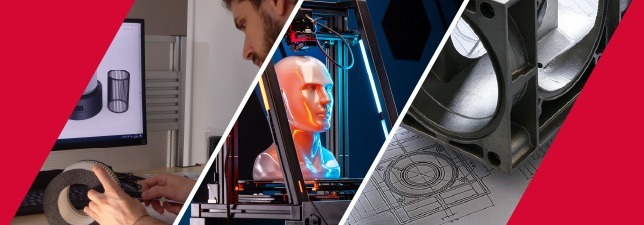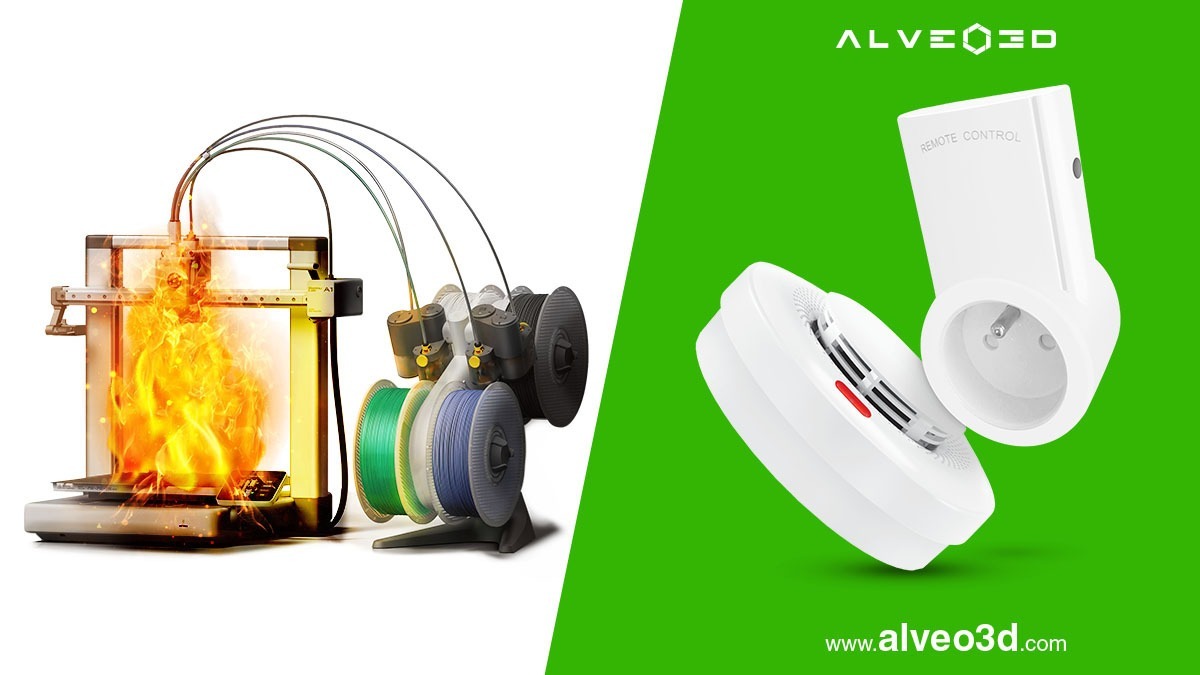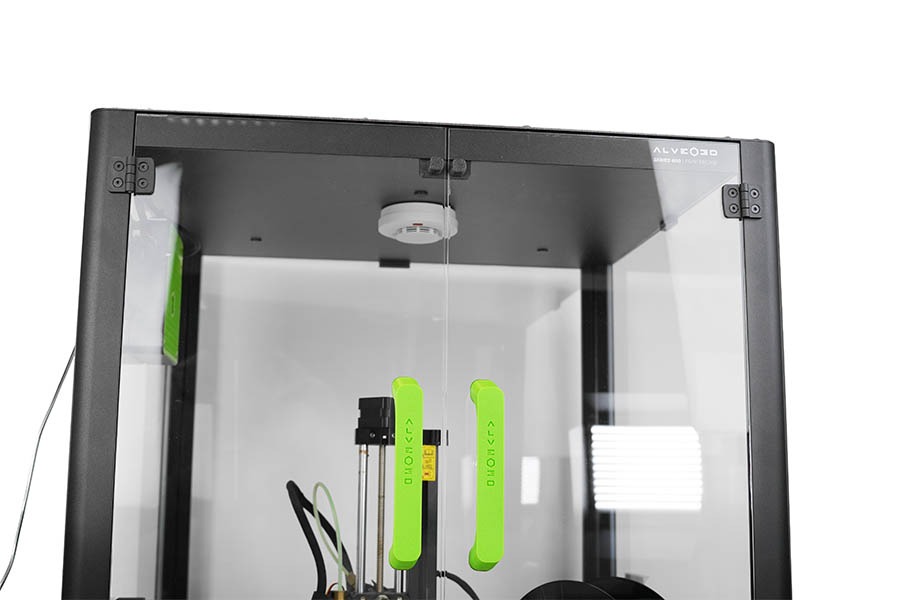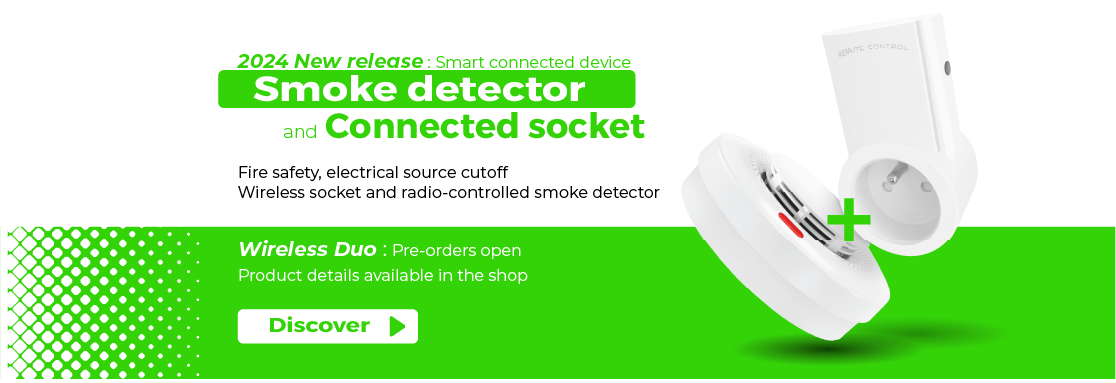I. The rise of 3D printer and the need for Fire Safety
It is forecast that the increase in the number of 3D printing and additive manufacturing equipment from 2020 to 2030 will increase to more than 2.7 million, an increase of more than two million compared to 2020 by about 285.7%. 3D printing has become increasingly popular.
However, the technology is not without its risks, and fire hazards are a growing concern. Recently, discussions about the Bambu Lab A1 highlighted a potential safety issue, reminding us of the importance of rigorous safety standards and quality assurance in the realm of 3D printing
A question is asked by many of us, does a 3D printer pose a risk of fire? Or do resin SLA printers start fires? The answer is Yes. Although 3D printer fires are relatively rare, they are not impossible, and it is important to acknowledge and manage the potential risks.
II. Is SLA safer than FDM in terms of fire risks?
That’s a complex question with no definitive answer. Here are some aspects to consider:
| Aspect | SLA | FDM |
| Fire risk | Low (resins not very flammable) | Moderate (risk of overheating components) |
| Chemical exposure | High (resins can release toxic fumes) | Low (filaments less toxic) |
| Light/heat intensity | Low (less intense light source) | High (high temperature nozzles) |
| Electrical safety | Comparable to other electronics | Comparable to other electronics |
| Material flammability | Low (resins generally less flammable) | Varies (depends on filament type) |
III. How often do 3D printer catch🔥?
Statistics
In fact, there isn’t a readily available database specifically tracking 3D printer fire incidents on a global scale. However, in the UK, electricity is a significant cause of accidental fires in UK homes, accounting for over 20,000 incidents each year. 9 out of 10 (89%) electrical fires are caused by electrical products. 3D printers require much more attention than other electronic devices due to the high temperatures involved during the 3D printing process.
Additionally, the National Fire Protection Association (NFPA), a non-profit organization dedicated to property loss, and economic loss due to fire, electrical, and related hazards identified 3D printers as an emerging home fire hazard:, alongside other items like hoverboards and lithium-ion batteries.
IV. Common causes of 3D printer fires
While the exact statistics on 3D printer fires are difficult to pinpoint, reports and anecdotal evidence highlight several key vulnerabilities:
- High operating temperatures: 3D printers utilize heated nozzles that can reach upwards of 250°C, posing a risk if malfunctioning or improperly operated.
🌡️ Need to know
- PLA (Polylactic Acid) typically prints at temperatures between 180°C and 220°C.
- ABS (Acrylonitrile Butadiene Styrene) usually requires higher temperatures, around 210°C to 250°C.
- Specialty materials, like some nylons or polycarbonates, may require temperatures exceeding 250°C, sometimes up to 300°C or more for proper extrusion
- Electrical issues: Faulty wiring, overheating components, and power surges can trigger electrical fires within the printer itself.
- Mechanical failures: Components of the printer, such as the extruder, can malfunction due to wear and tear or lack of maintenance, leading to overheating and potentially causing a fire.
- Lack of safety features: Some 3D printers may not have adequate safety features, such as thermal runaway protection. Adequate ventilation, Good Enclosure, which is designed to shut down the printer if abnormal temperature readings are detected.
- Poor quality components: Using low-quality or incompatible components (like third-party power supplies, filaments, or parts) can increase the risk of fire due to the potential for these components to fail or not operate within safe parameters.
- Software malfunctions: Bugs or glitches in the printer’s firmware or slicing software can lead to unexpected behavior, such as the hot end resting heated for too long or moving in ways that increase the risk of fire.
- Unattended printing: Many enthusiasts leave their printers running overnight or while away, increasing the risk of undetected problems becoming major hazards.
V. How to prevent 3D printer fires ?
Here is the 3D printing fire safety checklist:
✅ Always supervise 3D printer while it’s in operation. We recommend you need to check on your 3D prints every 30 minutes
✅ Be proactive in maintaining your printer. Regular maintenance ensures that all printer components operate correctly and safely.
✅ Use a smoke detector and consider installing a fire suppression system specifically designed for 3D printers.
✅ Place your printer on a stable, fire-resistant surface away from flammable materials.
✅ Ensure proper ventilation to prevent overheating.
✅Use more high-quality filament, make sure you know what your printer is made from?
✅Stay informed about potential fire hazards and recall notices related to 3D printers.
✅Setting up cameras for remote monitoring of 3D printers, allowing for real-time observation of the printing process.
✅Fire suppression systems: For high-risk situations, consider investing in a fire extinguisher
Our smart fire detector in a Bambu Lab
Additional tips (an enclosure with good equipment)
- Material: Fire-resistant materials like aluminum or flame-retardant plastics are crucial.
- Size: Ensure it comfortably fits your printer and allows for maintenance access.
- Ventilation: Look for built-in ventilation systems or options for adding them easily.
- Filtration: Consider enclosures with HEPA filters for additional fume control, especially for resin printers.
Remember: An enclosure is a valuable safety tool, but it’s not a replacement for responsible practices. Always prioritize proper maintenance, material handling, and safe operation for a truly secure printing experience.
💥 The cost of a missed spark:
- Property damage: Fire can quickly engulf the printer, surrounding furniture, and even the entire room.
- Personal injury: Inhaling toxic fumes or burns from a fire can lead to serious health risks.
- Financial loss: Replacing damaged equipment and potentially rebuilding a space can be costly.
Your first line of defense: Smoke detectors for 3D Printers
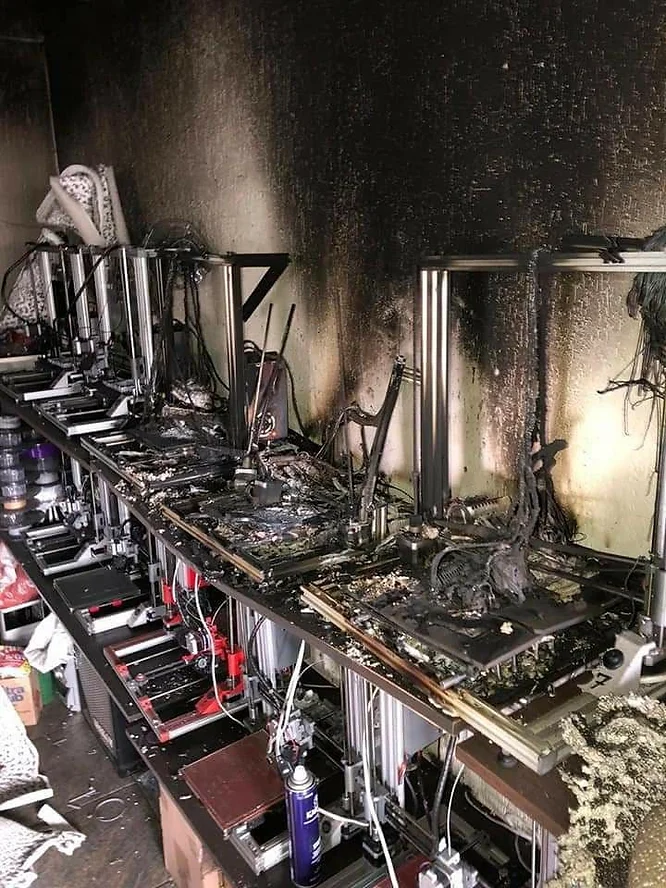
Source of photo : LV3D
VI. Why you should buy a smoke a detector?
- Early detection: Detects even the smallest traces of smoke, alerting you to potential fire hazards before they escalate.
- Heat sensor: Additional heat sensor for enhanced sensitivity to overheating components.
- Loud alarm: Emits a loud and clear alarm to wake you up or alert others in case of danger.
- Compact design: Discreet and unobtrusive, seamlessly integrates with your 3D printing setup.
- Easy installation: Mountable near your printer for optimal coverage.
VII. How does it work ?
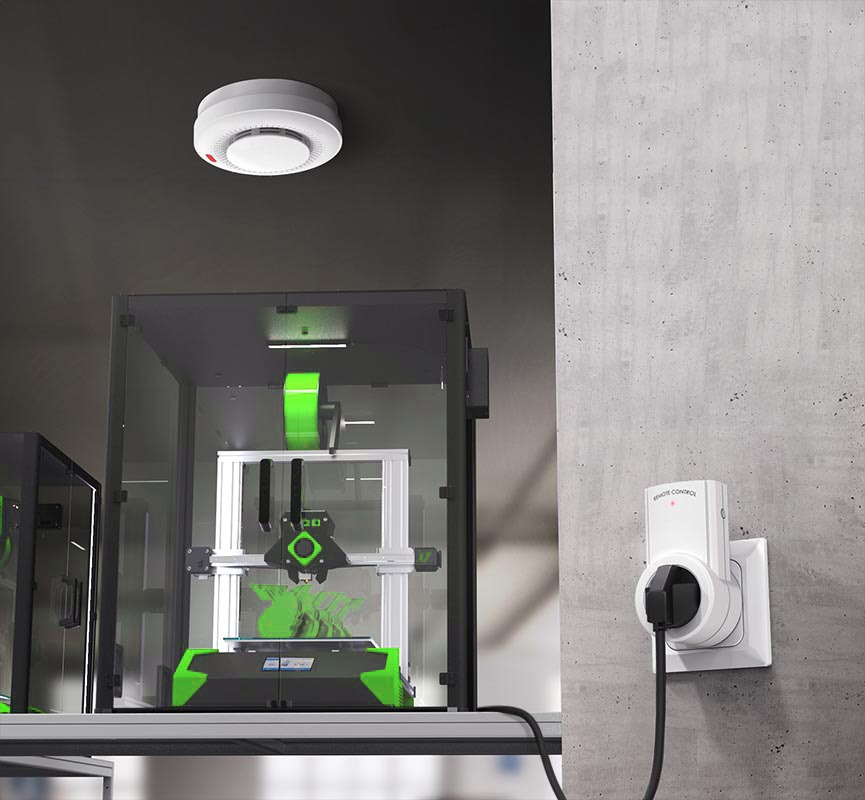
1. Smoke detector and connected socket
The 3D printer is plugged into the connected socket. The smoke detector is paired with it.

2. Smoke detector
The smoke detector emits a radio signal when smoke is detected

3. The connected socket
The connected socket receives the radio signal from one or more smoke detectors and cuts the mains supply via a relay
What to do if your 3D printer catches fire ?
Immediate Actions:
- Evacuate the area: Leave the room immediately and alert anyone nearby. Do not re-enter unless it’s safe.
- Activate the fire alarm: If available, pull the fire alarm to alert others and summon help.
- Call emergency services: Dial 911 (or your local emergency number) immediately.
- Contain the fire (if safe): If the fire is small and contained, only if safe to do so, attempt to extinguish it with a fire extinguisher rated for electrical fires. Never use water on an electrical fire!
- Do not touch electrical components while wet or standing in water.
After the Fire:
- Do not approach the fire: Let firefighters assess the situation and extinguish any remaining flames.
- Ventilate the area: Open doors and windows to remove smoke and fumes.
- Do not touch or move the printer: Wait for official instructions, as it may contain evidence for investigation.
- Inform your insurance company: Contact your insurance provider to report the incident and inquire about coverage.
- Contact the printer manufacturer: Inform them about the fire and follow their instructions for inspection and potential repairs.
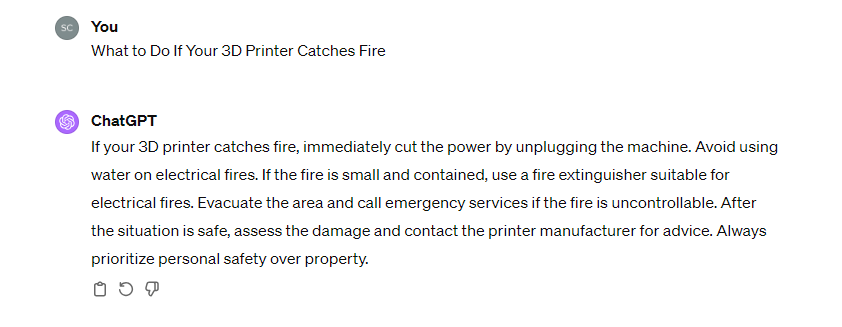
We recommend installing a smart smoke detector & connected socket that will automatically cut off the electricity in case of smoke detection. ChatGP4 is not bad, but It is not the best answer in this case
VI. Conclusion
By investing in a smoke detector specifically designed for 3D printers, you gain:
-
- Early warning: Gives you precious time to react and potentially extinguish a fire before it spreads.
- Reduced risk: Minimizes the chances of property damage, personal injury, and financial loss.
- Added confidence: Offers peace of mind knowing your printing hobby is safer with an extra layer of protection.
This incident doesn’t stop the incredible potential of 3D printing, but it serves as a valuable reminder to always prioritize safety protocols. Happy printing!
Resources:
- National Fire Protection Association. (n.d.). NFPA 101 standard development. Retrieved from https://www.nfpa.org/codes-and-standards/nfpa-101-standard-development/101?l=410
- Service Public. (n.d.). Actualités. Retrieved from https://www.service-public.fr/particuliers/actualites/A15841?lang=en
- Les Imprimantes 3D. (2024, January 29). Bambu Lab A1: Danger câble. Retrieved from https://www.lesimprimantes3d.fr/bambu-lab-a1-danger-cable-20240129/
- Statista. (n.d.). 3D printing and additive manufacturing devices worldwide. Retrieved from https://www.statista.com/statistics/1259618/3d-printing-and-additive-manufacturing-devices-worldwide/
- Electrical Safety First. (n.d.). Fire factsheet. Retrieved from https://www.electricalsafetyfirst.org.uk/media/1592/fire-factsheet.pdf
FAQ:
What are the signs of a potential fire hazard with my 3D printer?
Electrical Issues:
- Burning smell: This is a major red flag. If you smell burning plastic or electrical components, shut down your printer immediately and unplug it.
- Sparks or flickering lights: Sparks or flickering lights near the printer’s electrical components indicate a potential short circuit, which is a fire hazard.
- Worn or damaged wires: Inspect the printer’s power cable and internal wires for fraying, cracks, or exposed wires. These can cause shorts and fires.
Overheating:
- Excessive heat: The printer itself shouldn’t be excessively hot to the touch. If the extruder or other components feel unusually hot, it could indicate overheating.
Is it safe to print with materials like ABS or nylon that require high temperatures?
ABS and nylon are generally safe for 3D printing, but due to their higher printing temperatures compared to PLA, they require extra care.
Can using third-party filaments increase the risk of a 3D printer fire?
Yes, using third-party filaments can potentially increase the risk of a 3D printer fire, because of unknown composition. Third-party filaments might not be manufactured with the same quality control standards as brand-name filaments. Inconsistent material composition can affect printing temperatures and flammability.
